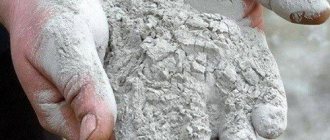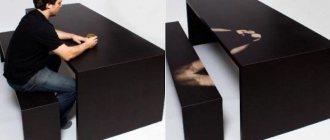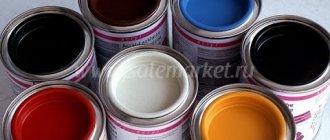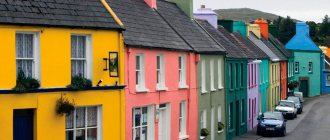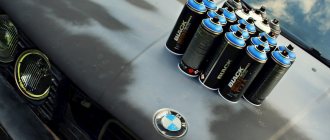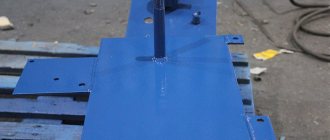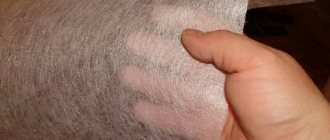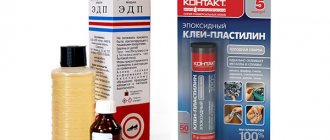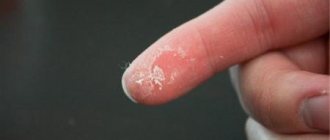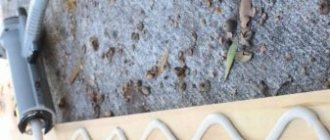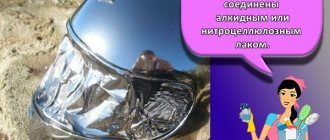NC varnish (nitrocellulose, nitrovarnish) is the best choice for protecting wooden furniture. This is the result of the combination of nitric acid esters of cellulose. Applying nitro varnish on wood improves the aesthetics of the coating. The result is a durable transparent or colored film.
Certain characteristics of the product depend on the addition of plasticizers and resins to the composition (for example, waterproof nitro varnish), pigmenting components of organic origin (they create a shade or color of the surface). Nitrovarnish is used when processing cabinets, cabinets, and benches.
Features of the material
Nitrocellulose varnish (NC) is made on the basis of nitrocellulose - a chemical compound, cellulose nitrate ester. The resulting organic product has valuable properties - it helps protect wood from damage, creates a beautiful coating on it, which improves the aesthetic appearance of the product. The resulting varnish film is transparent, without color, or colored, and is quite durable.
An important feature of varnishes is that there is no special need for priming the surface, although sometimes primer is still applied. The product can be used even in hot or cold weather, but to obtain a high-quality coating it is recommended to add a solvent - up to 5%. This will help prevent the material from drying out.
Varnish composition
The basis, as already noted, is a polymer - high quality wood or cotton cellulose. This substance is diluted with a special organic mixture to obtain varnish colloxylins. The composition also includes additives:
- alkyd resins, shellac;
- aminoformaldehyde resins;
- cyclohexanone-formaldehyde resins;
- Winsol;
- rosin.
The amount of such additives can be in different proportions with colloxylin (up to 1:1). To give the solution the desired consistency, the composition contains a mixture of solvents - propyl acetate, ethyl acetate, acetic acid esters, xylene, toluene, and various alcohols. The material may contain nitroparaffins, and there must be plasticizers (casterol, chlorinated paraffin, phosphates and others). As you can see, the composition of NC varnish is very complex and multi-component.
Compound
In addition to wood (or cotton) cellulose, an organic thinner, alkyd and amino-formaldehyde resins, Winsol and rosin are added to the composition. Propyl acetate, acetic acid esters, toluene, ethyl acetate, and xylene can be used as solvents. Possible nitroparaffins (plasticizers) include chlorinated paraffin, phosphates, and casterol.
Material properties
The important advantages of the product are its ease of application, low cost and high quality. The film created, depending on the specific brand, can be:
- matte;
- glossy;
- semi-matte, semi-gloss.
The coating will be uniform, even, hard, it has excellent adhesion to the base, and it sands well. Products with such a coating should be used at a temperature of +12...+60 degrees; at a higher temperature, the varnish will quickly deteriorate. The material is ideal for parquet and furniture (it is often called parquet or furniture varnish), wooden floors, doors, souvenirs and other wood products.
These products can be used indoors; most types of varnish are not intended for outdoor use. Also, the disadvantages of the product include its low physico-chemical resistance, increased flammability, and high sensitivity to water and sunlight.
Solvents: what are they and what are they for?
A solvent is a rapidly evaporating organic or inorganic substance. Depending on the composition, it happens:
- multicomponent;
- one-component.
Depending on the type of substance included in the composition, one-component solvents are divided into:
- inorganic (liquid ammonia, water, sulfur salts and phosphorus).
- organic (white spirit, turpentine, solvent, kerosene, gasoline);
Organic solvents have a persistent, specific odor, and are more in demand. Based on the rate of evaporation, they are divided into the following types:
- highly volatile . These include white spirit, gasoline and solvent. Used for car enamels, acrylic paints and varnishes and oil-based compositions.
- moderately volatile. This type includes kerosene, which undergoes special purification and only after that acquires the necessary properties. Suitable for acrylic or oil compositions.
- difficult to volatilize. This includes the well-known turpentine. Used for diluting car enamels and oil paints.
On a hot day, at high temperatures, when direct sunlight is inevitable, it is better to use the first type, in the cool season - the third. Consideration should be given to which solvents are used for which paints.
Varnish production
The production process of this paint and varnish material is quite complex. It is based on the following steps:
- dissolving resins and colloxylin in organic solvents;
- connection with plasticizers and other additives;
- measuring the indicators of the received material;
- cleaning, filtration;
- spilling into containers.
To obtain black varnish and its other shades, the necessary pigments are added at a certain stage of production. In their absence, the result is a colorless varnish. Each component is administered in a regulated quantity, and the rate of the rest changes based on the volume of colloxylin.
Attention! The preparation of colloxylin is carried out under special conditions due to its explosiveness and flammability. This substance is stored only in sealed containers under special conditions.
When producing a material, you can change its density - if it is too liquid, add colloxylin, if it is thick, add solvents. Homogeneity is achieved by introducing high-quality and purified components, as well as subsequent purification in centrifuges.
Production
The production technology is complex and is carried out in stages:
- dissolution of resins and colloxylin with organic substances;
- adding plasticizers, modified compounds;
- measuring the results obtained;
- cleaning the composition;
- filtration;
- spilling into containers (for example, nitro varnish in cans).
Nitrolacquer is tinted by adding pigments. Without them, the finished product remains transparent (colorless). The amount of added components is entered relative to the volume of colloxylin. The main component is classified as flammable and explosive, so it is stored in a sealed container under proper conditions. By adding colloxylin you can increase the thickness of the product. If it is too viscous and thick, it is diluted with solvents. To ensure that paints and varnishes have a uniform consistency, the composition is cleaned in centrifuges.
Colloxylins can be of high-viscosity or low-viscosity grades (BB or PSV, respectively), and are produced from cotton and wood cellulose. The nitrocellulose base creates a protective film after applying the product to the surface itself. Solvents can be high-boiling (dioxanes, ketones, for example, methyl isobutyl ketone or cyclohexanone), low-boiling (formal glycol, ethyl acetate, propyl acetate, methyl ethyl ketone, acetone). The addition of xylene and toluene allows you to adjust the consistency of the composition.
Plasticizers are either gelling or non-gelling. The second category includes casterol, chlorinated paraffin, castor oil, sovol. For gelatinizing types, additives from sebacates, phosphates, and phthalates are suitable.
To get colored nitro varnish, do:
- dissolving the coloring pigment in an organic solvent;
- combining the finished coloring solution with the finished composition of nitrocellulose varnish.
Preparation of colloxylin (loosening, weighing) is carried out in a separate room due to the increased fire hazard. The component is stored in sealed aluminum barrels.
The production of nitro varnishes with a thick consistency requires the use of mixers with horizontal loading and the alternate addition of components: alcohol, thinner, resins, resin solutions, plasticizers, colloxylin, active solvents. The finished nitro varnish is packaged in barrels, jars or tanks.
Nitrocellulose mixture can also be prepared at home. Watch the video.
Technical characteristics of varnishes
Depending on the specific brand, the technical characteristics of the products may vary. Varnishing is carried out after studying the recommendations and assessing the parameters of a particular product.
Among the most widely used brands there are three main ones; let’s look at them in more detail.
The NTs-62 material is used for decorative finishing of products, as the product gives them an attractive appearance. Can serve as paint as it comes in red, purple, green and other colors. In addition to wood, this product can be used to cover mosaic display cases, illumination lamps, glass, metal, and paper products.
- viscosity according to the viscometer VZ-246 – 26–40 s;
- volume of dry residue – 7–12%;
- coating quality – colorless, colored, transparent, glossy;
- consumption – 70–100 g/sq.m. m.
For dilution, solvent No. 646 is used. The varnish is applied in 1–2 layers, and each layer must be completely dry to touch.
Specifications and brands
The features and strength of nitro varnishes will largely depend on the brand, and one should take into account the possibility of using them for certain jobs, for example, covering parquet.
NTs-62
We are talking about colorless varnish NTs-62 for wood, which is ideal for decorative products and also improves their aesthetics. Depending on the pigments added, the varnish can also be green, red, purple, or any other color. Colored varnish is most often used instead of paints, and in addition to wooden products, mosaic display cases, paper, glass, metal, and also illumination lamps can be coated with such nitro-varnish. The degree of viscosity ranges from 26 to 40 s, the proportion of dry composition ranges from 7 to 12%, consumption from 0.07 to 0.1 kg per square meter. As a result, you get a colorless or colored, glossy and transparent layer. Solvent No. 646 can be used as a thinner, and the varnish should be applied in a couple of layers, after the next one has completely dried.
NTs-134
The varnish is quick-drying and is suitable for metal and wooden substrates. Durable dried layers make it possible to use varnish for outdoor work, and you can also use solvents No. 645 and No. 646. The characteristics of nitro varnish are good, because the degree of viscosity is from 28 to 60 s, the drying time is from ½ to 1 hour, the proportion of non-volatile components is from 13 to 17%, and as a result you will get an even glossy layer. New layers can be applied only after the previous one has dried.
NTs-218
This brand is excellent for furniture and window sills made of wood. Quick-drying varnish (dries no more than an hour at room temperature). The quality of the result is obtained when applied to a dry and smooth surface. The finished coating can last approximately 10 years. Antiseptic additives in the composition help protect parts from rotting and destruction by insects. The interior treatment of the cabinets will protect things from getting snagged. The coating result will be matte. The characteristics are impressive - the degree of viscosity is from 50 to 85 s, the proportion of dry residue is from 30 to 34%, transparent, and the level of elasticity of the film at the bend is 1.5 cm. The product can only be used for interior work.
NTs-223
This varnish composition is suitable for interior work and wood surfaces. The parameters are as follows: the degree of viscosity is no more than 125 s, resistance to moisture is not less than 6 hours, the elasticity of the finished coating is 0.5 cm, and the proportion of non-volatile substances is from 33 to 36%. The result is a perfectly smooth film with a glossy shine.
NTs-224
This is a special composition with the addition of esters and resins to protect against cracking. The result will be perfectly sandable, and there is no need to dilute the nitrovarnish itself before use. You should also adhere to the temperature regime when working from +18 to +20 degrees. The remaining technical characteristics of the product will be similar to the previous varnish composition.
NTs-225
This varnish is often used to treat interior doors; it is easy to polish and is also resistant to high temperatures. The characteristics are such that the fraction of dry residue is from 35 to 40%, the degree of viscosity of the composition is 115 s, and the optimal thickness of each layer is 50 microns. The quality will be guaranteed after applying one or two layers, and this is due to the addition of plasticizers, as well as film-forming substances, to the product.
NTs-241
A special feature of the product will be carbide resins in the composition, which make it resistant to moisture and low temperatures. The finished coating will dry for at least 1.5 hours, and the result will be transparent and matte.
NTs-243
The addition of pigments to nitrocellulose varnish gives the finished coating a slightly yellowish and pink tint. The product will fall into the category of mattifying, quick-drying products. Relevant for removing defects. The drying time of the layer is 1 hour, the proportion of dry residue is from 26 to 32%, and the degree of light resistance is up to 1 hour. The finished drying base will be smooth and free of “wrinkles” and foreign inclusions on the surface.
NTs-551
Composition of grade No. 551 based on nitrocellulose is used for processing textile products (special purpose fabrics). The fractional solids content is 9%, the degree of viscosity ranges from 130 to 160 s, and the shrinkage level is only 0.6%. The surface itself first needs to be cleaned of old paint and varnish material, roughnesses must be sanded and dust removed. The varnish must be applied in four layers, and the first one will dry for about a couple of hours, and to speed up the process, you can use a hair dryer. Each layer should be left for 6 to 8 hours to dry perfectly, and before applying the first layer, the surface should be treated with a water-based stain.
Other brands
The series of nitrocellulose paints and varnishes also produces other brands that are used in production and at home.
NTs-134
Quick-drying varnish NTs-134 is used for painting wood and metal products; it can even be used for outdoor work. It is diluted to working viscosity with solvents No. 645, 646.
- conditional viscosity according to the viscometer VZ-246 – 28–60 s;
- the appearance of the film is smooth, glossy;
- drying time – 30–60 minutes;
- proportion of non-volatile substances – 13–17%;
- acid number – 0.5 KOH/g.
NTs-223
The material NTs-223 is used only for interior work, used for coating wood and products made from it.
- coating – glossy, smooth;
- conditional viscosity according to the viscometer VZ-246 – up to 125 s;
- proportion of non-volatile substances – 33–36%;
- resistance to water – from 6 hours;
- film hardness according to the M-3 device - 0.55 cu. e.;
- bending elasticity – 5 mm.
NTs-224
Varnish NTs-224 is distinguished by the presence of special esters and resins in its composition. This allows the film to crack less and be sanded better. No dilution is required before application. Application temperature +18…+20 degrees. The remaining indicators are similar to those of the previous product.
NTs-225
Varnish NTs 225 is easy to polish and is most often used to coat interior doors. The material tolerates hot drying well at 70–75 degrees, due to this it contains more film-forming substances; only 1–2 layers can be applied.
- dry residue share – 35–40%;
- viscosity according to the VZ-4 viscometer – 115 s;
- thickness of one layer – 50 microns.
NTs-241
The NTs-241 product includes special urea resins, which give it greater water resistance and frost resistance, which helps withstand temperature changes. There are two types of varnishes available - transparent and matte. The difference from previous varnishes is that drying takes longer; the material dries in 1.5 hours.
NTs-551
Varnish NTs-551 is used to coat special-purpose fabrics in order to impart a number of properties to them. In appearance, it is a liquid without impurities or foreign particles. Mass fraction of dry residue is 9%, viscosity according to the VZ-1 viscometer is 130–160 s. After application to the fabric, its weight gain will be 75 g/sq. m. (4 layers of product), shrinkage – 0.6%.
Brands and specifications
The technical features and strength of nitro varnishes depend on the brand. This takes into account the possibility of using them for specific work, for example, parquet covering.
NTs-62
This is a colorless NC wood varnish, which is suitable for decorative products and improves their aesthetics. Depending on the added pigments, it can be red, purple, green or any other color. Colored varnish is used more instead of paint. In addition to wooden surfaces, NTs-62 is used to cover mosaic display cases, glass, paper, metal, and illumination lamps.
Viscosity degree – 26-40 s;
dry residue share – 7-12%;
consumption – 70-100 g/m2;
the result is transparent, colorless (colored), glossy.
Solvent No. 646 can be used as a thinner. The varnish should be applied in 1-2 layers, after the previous one has completely dried.
NTs-134
The varnish belongs to the category of quick-drying. Suitable for wooden and metal bases. The strength of the dried layers allows the varnish to be used for outdoor use. Solvents can be used No. 645 or No. 646.
Specifications:
- degree of viscosity – 28-60 s;
- drying time – 30-60 minutes;
- part of non-volatile components – 13-17%;
- the result is an even glossy finish.
New layers are applied only after the previous one has dried.
NTs-218
Brand for wooden window sills and furniture. Quick-drying varnish (no more than an hour at room temperature). The quality of the result is possible when applied to a flat and dry surface. The finished coating can last about 10 years. Antiseptic additives in the composition protect parts from rotting and destruction by insects. The interior treatment of cabinets protects items from snags. The result of the coating is matte.
According to technical characteristics:
- degree of viscosity – 50-85 s;
- part of the dry residue – 30-34%;
- color – colorless;
- The level of elasticity of the film when bending is 15 mm.
The product can only be used for interior work.
NTs-223
This is a varnish for interior use and wooden surfaces only.
Technical specifications:
- degree of viscosity – no more than 125 s;
- moisture resistance – at least 6 hours;
- elasticity of the dried coating – 5 mm;
- part of non-volatile substances – 33-36%.
The result is a smooth film with a glossy sheen.
NTs-224
Composition with the addition of resins and esters to protect against cracking. The result is easier to polish. There is no need to dilute the varnish before use. It is necessary to maintain the temperature regime during operation - about +18-+20°C. In terms of other technical properties, the product is similar to NTs-223.
NTs-225
Often used for processing interior doors. Easy to polish and resistant to high temperatures.
Characteristics:
- part of the dry residue – 35-40%;
- degree of viscosity of the composition – 115 s;
- the optimal thickness of one layer is 50 microns.
Quality is guaranteed after applying 1-2 layers. This is due to the addition of plasticizers and film-forming substances to the composition.
NTs-241
The peculiarity of the product is explained by the urea resins in the composition. They make the composition resistant to moisture and low temperatures. The finished coating dries for at least 1.5 hours. The result itself is matte transparent.
NTs-243
The addition of pigments gives the finished coating a slightly pink or yellowish tint. The product belongs to the category of quick-drying matting compositions. Relevant for hiding defects.
Characteristics:
- drying time of the layer – 60 minutes;
- part of the dry residue – 26-32%;
- degree of light fastness – 60 min.
The finished dried base remains smooth, without wrinkles or foreign inclusions.
NTs-551
Nitrocellulose composition grade 551 is used for processing textiles (special purpose fabrics).
- Part of the dry residue – 9%;
- degree of viscosity – 130-160 s;
- shrinkage level – 0.6%.
The surface itself must first be cleaned of old paint and varnish material, dust, and roughnesses must be sanded. The varnish must be applied in four layers. The first layer dries in about 1-2 hours. To speed up the process, you can use a hair dryer. Each layer should be left for 6-8 hours to dry completely. Before applying varnish, it is recommended to treat the surfaces with a water-based stain.
Application of nitro varnishes
Before using materials, prepare the surface - clean it from dirt, dust, old coating, and grind it. You can use a water-based stain under the varnish. The first layer of nitrocellulose should be dried for 1–2 hours; to speed it up, use a hair dryer.
To obtain a high-quality film, the second layer must be left for 6–8 hours to dry, after which sanding is carried out. Typically, NC varnishes are used on economy-class furniture, since more expensive materials last longer, but due to their efficiency they do not lose popularity.
If you need to protect your wooden products and furniture from aging and external environmental influences, nitrocellulose varnishes are perfect for you, which are always used when necessary to create an aesthetic effect and protect the material from damage.
The process of applying nitro varnishes
If you need to cover small parts with nitro varnish, for example, wooden handles, then the easiest way is to lower each part into the container with the composition for a few seconds, and then take it out and allow the excess varnish to flow back into the jar. If the coated product cannot be laid down, it can be hung until dry. An alternative option for applying nitro varnish is to spray it from cans.
In all other cases, you will need an additional tool, attentiveness and a little time.
The process of applying nitro varnish consists of several stages.
- Surface treatment with water-based (alcohol-based) stain or with the addition of an organic solvent. This will preserve the texture and grain of the wood.
- Applying the first layer of nitro varnish, which must be allowed to dry completely (at least 45 - 120 minutes). You can speed up the process with a hair dryer.
- The second layer of applied product should dry for at least 6-8 hours.
- The surface must be sanded.
- Each new layer is applied in a mandatory perpendicular direction to the previous one.
Application features also include the use of high-quality brushes, which allows you to create a uniform protective film on the surface.
Nitrocellulose varnishes
This type of varnish is made from nitrocellulose, which is pre-diluted in a special mixture consisting of organic matter. Next, to obtain a variety of nitro varnishes, alkyd or amino-formaldehyde resins are added. Subsequently, using nitro varnishes, you can obtain transparent colorless films that will serve as protection for the wooden surface. Due to the durability of the coating, varnish can sometimes be applied without priming the surface. Please note the following: if you apply nitro varnish in hot or humid weather, we also recommend adding a 5% solvent to prevent premature drying of the material.
Among the advantages of nitro varnishes, the following parameters can be distinguished:
- ease of use,
- high drying speed,
- long viability,
- excellent grindability,
- small price.
But, like any material, nitrocellulose varnishes also have their disadvantages:
- they are sensitive to moisture,
- they have low physicochemical resistance,
- increased fire hazard.
The main use of nitrocellulose varnishes is in the treatment of wood and plywood furniture during production.
This process consists of several stages, and often nitro varnishes in it play not only the main role, but also as additional protection. This happens especially often when varnishing parquet.
Technical characteristics of NC varnishes
Varnish NC 221
Regarding nitrovarnish NTs-221, we can say the following: it has an excellent ability to withstand temperature changes, however, among its disadvantages is a predisposition to darkening. It should also be remembered that due to the content of glyphthalic resin in its composition, the lacquered coating NTs-221 initially has a dark, opaque shade.
The closest “relative” of NTs-221 can be called nitrovarnish NTs-222, (formerly NTs-312), which has an identical composition to its “brother”: it differs only in the absence of glyphthalic resin, which thus deprives it of the darkening characteristic of NTs-221 . Among other things, this nitro varnish has a shine, which cannot but please the buyer, but if it is applied in several layers, the coating will crack.
Varnish NC 223
Nitrovarnish NTs-223 raises the bar among its peers: both cold and hot drying methods can be applied to it. Among the advantages of the lacquer coating of nitro-varnish NTs-223 is sufficient hardness and the ability to be polished. Thanks to these properties, NTs-223 varnish (which, by the way, was previously called “NTs-315-M”) is very popular as a furniture varnish.
Varnish NC 224
Next in line in our article, nitrovarnish NTs-224, is quite different in chemical composition from the above-mentioned coatings. The main component for the entire family of nitro varnishes, colloxylin, is also included in this nitro varnish, but some substances have been added to it that will not mean anything to the average buyer. Therefore, we prefer to provide you with more informative information: this nitro varnish does not require preliminary dilution using various solvents and thinners. The film formed as a result of drying of the NTs-224 coating has excellent sandability. (The previous name of this nitro varnish used to sound like T3).
Varnish NC 225
Another representative of nitro varnishes, NTs-225, is characterized by strength and excellent sandability; it is also easy to polish. The scope of application of NTs-225 relates to the treatment of surfaces of interior doors. In the case of NTs-225, you can safely use hot drying. (Previously, NTs-225 was called “TK-N”)
To bring cold applied nitro varnishes to the desired viscosity, solvents and thinners are used. Hot applied nitro varnishes must be heated to a temperature of 70.75°C. The effectiveness of this method exceeds the importance of cold application: the advantage of the hot method is to obtain thicker coatings that are applied much faster and dry at a faster rate, and the material itself is consumed more economically.
Matting nitro varnishes form matte coatings on the surface that partially erase the color and texture of the wood. These coatings are formed due to wax substances or fine-grained fillers contained in varnishes.
In the domestic production of varnishes, the main substance is zinc stearate, which is added to the solution in an amount of 5-10% of the film-forming substances.
Zinc stearate dissolves in aromatic hydrocarbons when heated and tends to precipitate out of solution when cooled.
Varnish NC 241
To increase the frost resistance, water resistance and chemical resistance of varnish coatings, it is customary to add urea resins to acid-curing nitro varnishes. They help enhance the strength properties of coatings under sudden and frequent temperature changes.
At the moment there are three varnishes - transparent NTs-241 and matting NTs-241M and NTs-2101.
The most economical of all nitro varnishes is NTs-216, but you should not focus on its price - this coating is quite good at restoring varnish films. Most often, NTs-216 is used as a material for processing furniture surfaces made of wood. Using varnish will give any wooden furniture a second life.
Varnish NC 218
NTs-218 carries the same functions, however, unlike NTs-216, this varnish is usually applied to the surface in a thick layer, and its cost is slightly higher than the price of NTs-216.
Among nitro varnishes, it is customary to distinguish a special category, which includes varnishes used as primers. The most popular among them is NTs-024. Its main task is to prepare the surface for applying another nitro varnish to it.
The sequence of applying nitro varnish to a wooden surface
First you need to treat the surface with a wood stain, which is based on alcohol, water or an organic solvent. This is necessary to preserve the natural grain of the wood, as well as to emphasize its texture.
This is followed by the first application of nitro varnish. The drying interval between applications of the material can range from 45 minutes to 2 hours. You can increase the drying speed using an industrial hair dryer.
The second layer of nitro varnish takes about 6-8 hours to dry. Next you need to sand the coating.
It is necessary to take into account that each subsequent layer of this varnish should be applied perpendicular to the previously applied layer.
Table. Requirements and standards for varnishes in accordance with GOST 4976-83.
| Indicator name | Standard for brand varnish | Test method | ||||
| NTs-218 | NTs-222 | NTs-223 | NTs-243 | |||
| 1. Appearance of varnish | Transparent, homogeneous solution | Opaque solution from light yellow to yellow | According to clause 4.8 | |||
| 2. Appearance of the film | Glossy, smooth, transparent, uniform coating without bubbles or mechanical inclusions | Smooth, uniformly matte, uniform coating without bubbles or mechanical inclusions | According to clause 4.4 | |||
| 3. Varnish color according to the iodometric scale, mg/100 cm3, no darker | 20 | 40 | 40 | According to GOST 19266 | ||
| 4. Mass fraction of non-volatile substances, % | 30 — 34 | 22 — 26 | 33 — 36 | 26 — 32 | According to GOST 17537 and clause 4.5 of this standard | |
| 5. Conditional viscosity at (20.0 ± 0.5) °C using a VZ-246 type viscometer with a nozzle diameter of 4 mm (or VZ-4) | 50 — 85 | 30-45 | No more than 125 | 35 — 80 | According to GOST 8420 | |
| 6. Boiling temperature of varnish, °C, not lower | — | — | 75 | — | According to clause >4.6 | |
| 7. Drying time of varnish at (20 ± 2) °C to degree 3, hours, no more | 0,75 | 1 | 1 | 1 | According to GOST 19007 and clause 4.7 of this standard | |
| 8. Film elasticity when bending, mm, no more | 15 | 35 | 5 | 10 | According to GOST 6806 and clause 4.8 of this standard | |
| 9. Film hardness, conventional units, not less, according to a pendulum device: | According to GOST 5233 | |||||
| type M-3 | 0,5 | 0,6 | 0,55 | 0,4 (0,30) | ||
| type TML (pendulum A) | 0,2 | 0,3 | 0,25 | 0,2 (0,15) | ||
| 10. The ability of the varnish film to be sanded and polished | >The film must withstand the test | >Do not define | >The film must withstand the test | >Do not define | According to clause 4.9 | |
| 11. Film gloss, % | According to GOST 896 and clause 4.10 of this standard | |||||
| no less | 60 | 50 | 50 | — | ||
| no more | — | — | — | 20 | ||
| 12. Conditional light fastness of the film, h, not less | 2 | 2 | 2 | 1 | According to GOST 21903, method 2, and clause 4.1 of this standard | |
| 13. Film resistance to static action of water at (20 ± 2) °C, h, not less | 12 | 6 | 6 | 6 | According to GOST 9.403 and clause 4.12 of this standard | |
| 14. Heat resistance of the film at (60 ± 2) °C, min, not less | 30 | 30 | 30 | 30 | According to clause 4.13 | |
